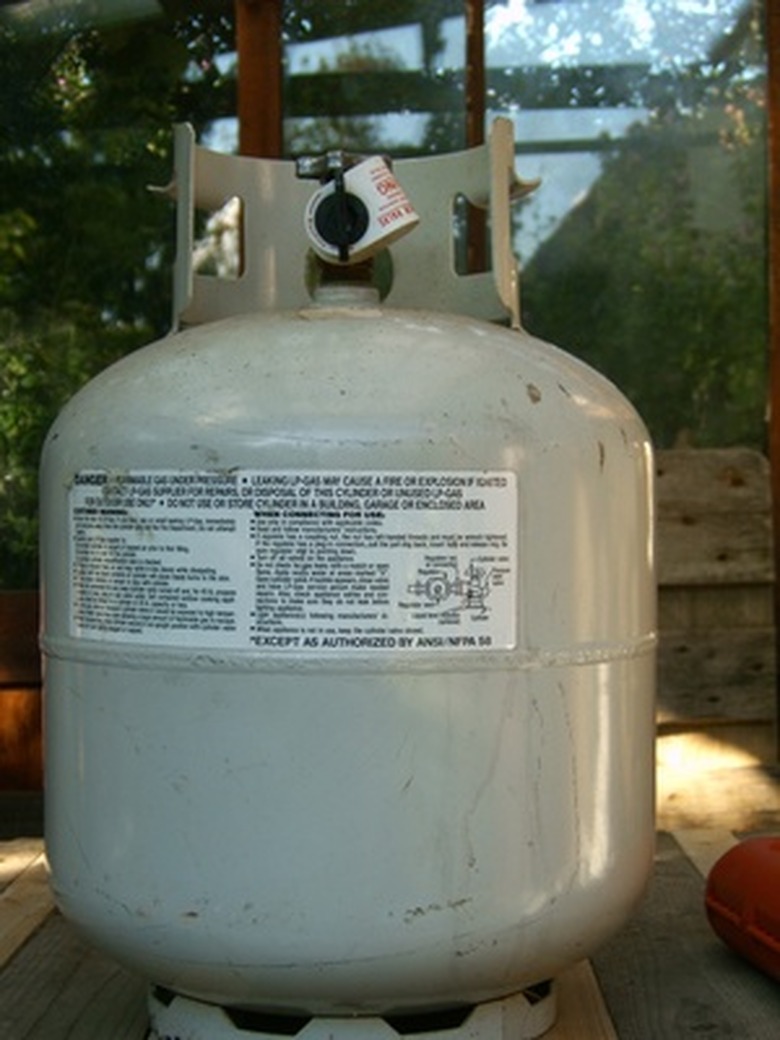Propane Tank Refilling Regulations
Federal regulations for dispensing and refilling propane tanks are set by the National Fire Protection Agency (NFPA), the Department of Transportation (DOT) and the Occupational Safety and Health Administration (OSHA). Individual states and local jurisdictions may vary from federal regulations, so it is important to check with your state for variations. Regulations also vary for other types of propane tanks, including forklift cylinders and installed residential tanks.
Training
Training
The NFPA requires documented training on propane handling procedures, with refresher training every three years, for anyone who dispenses propane. DOT hazmat training complies with this standard, as does the National Propane Gas Association's Certified Employee Training Program (CETP) and the GAS Check training program. Other programs on safe propane handling procedures also may meet this requirement.
Safety Precautions
Safety Precautions
All of these agencies require following certain safety precautions when refilling propane tanks. OSHA mandates the use of protective equipment, such as gloves, to prevent freeze burns from propane contact. The NFPA and OSHA require propane dispensing equipment be kept at least 10 feet from other combustible materials and 25 feet from open flames and sparks. At least one fully charged, 18-pound, B:C-rated fire extinguisher must be maintained at the filling area and employees must be trained on its use, with refresher training annually. Employees must know the location and procedures for using the emergency shutdown. They also must also the emergency response plan, proper propane handling procedures and the properties and dangers of propane.
Equipment
Equipment
According to the NFPA, propane dispensers must understand how to operate and maintain propane dispensing equipment, including the shutdown system. In addition, before refilling cylinders, the employee must prepare the equipment by slowly opening the liquid outlet valve and inspecting all equipment–hose, fittings, piping, valves, adapter threads–and checking for leaks.
Tank Inspection
Tank Inspection
Before a propane tank may be refilled, the DOT requires that it be inspected by the attendant. A propane cylinder may not be refilled if it is corroded; dented; bulging; damaged on valves, footings or valve protection; damaged from fire or misuse; leaking; missing an overfilling device; out of date. Out-of-date tanks may not be refilled and may only be requalified at a registered DOT facility. In addition, tanks that have been opened may need to be purged. If so, depending on the tank and dispensing operation, the tank may have to be set aside for purging by a trained employee at the proper facility.
Refilling
Refilling
Propane tanks can be filled by weight or volume.But according to DOT regulations, propane tanks with less than 200 pounds capacity must be refilled by weight. The proper refilling procedure is detailed in the CETP handbook. While refilling, the propane tank and equipment may not be left unattended. After filling the tank, it should be plugged or capped before transfer to a customer. If the tank has been overfilled, do not give it a customer. Dispensing equipment must be shut down and secured when not in use. Missing or illegible labels on the cylinder must be replaced. Tanks weighing less than 100 pounds must have a customer warning/information label. Tanks that will be shipped must have compliant DOT labels.
Loading
Loading
Propane cylinders must be placed upright and properly secured to protect damage to valves and fittings. When loading multiple cylinders, the load must be evenly distributed. Straps, cables or ties should be used to secure the load. The DOT and OSHA require that securing equipment be inspected before each use. Passenger cars and trucks should not carry more than 90 pounds of propane and not more than 45 pounds in one tank, according to NFPA regulations.
Storage
Storage
Under OSHA and NFPA guidlines, propane cylinders must be stored at least 10 feet from any source of ignition, 25 feet from other combustible materials (only 20 feet in retail cylinder exchange operations), properly labeled, secured and monitored. OSHA loading regulations also apply for tanks stored in stacks or racks.
References
- Propane Education & Research Council: Dispensing Propane Safely
- Propane Education & Research Council: CETP, Basic Principles and Practices of Propane
- "NFPA 58: Liquefied Petroleum Gas Code"; National Fire Protection Association; 2008.
- Occupational Safety and Health Administration: Storage and Handling of Liquefied Petroleum Gases, Summary
